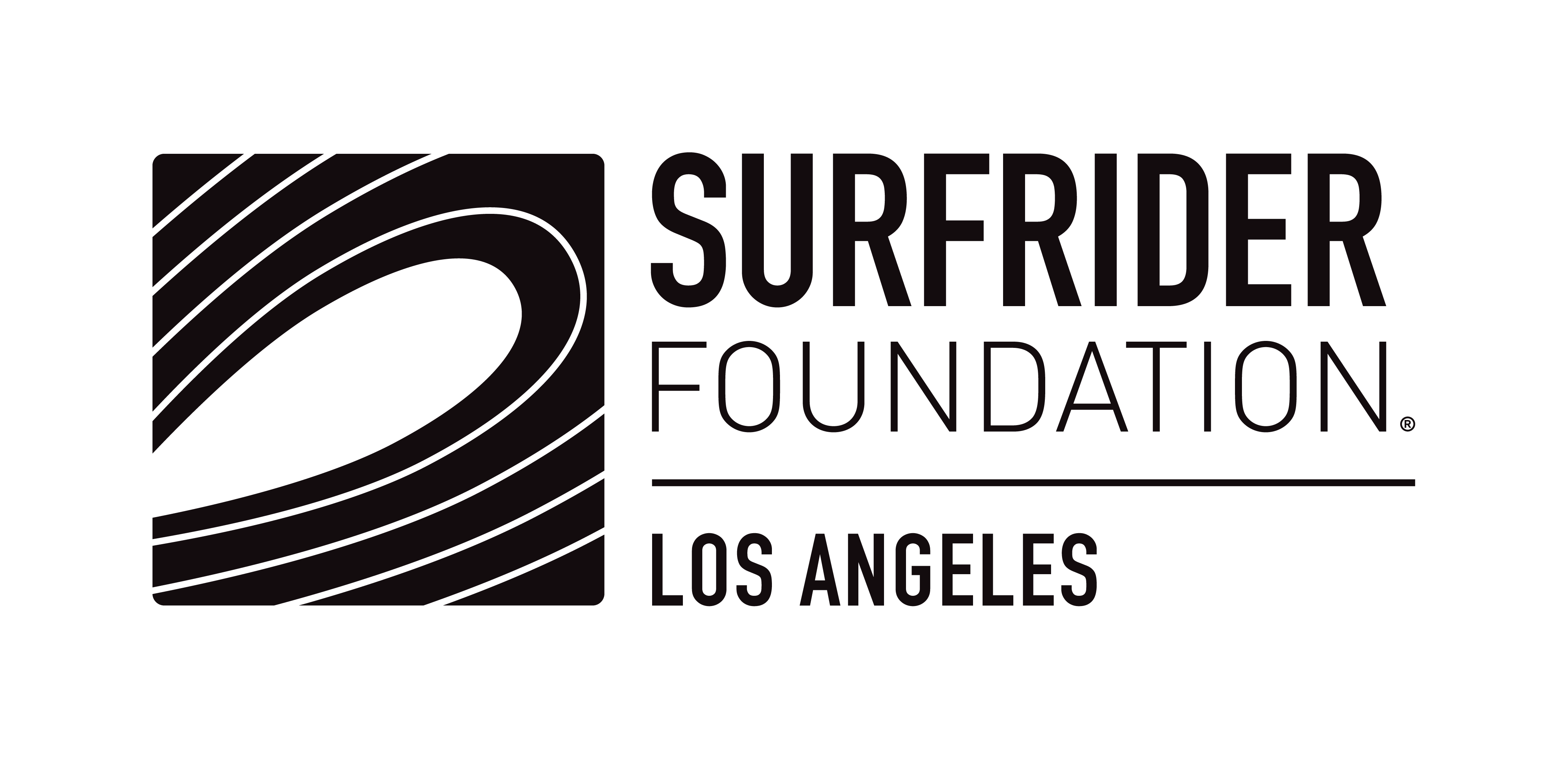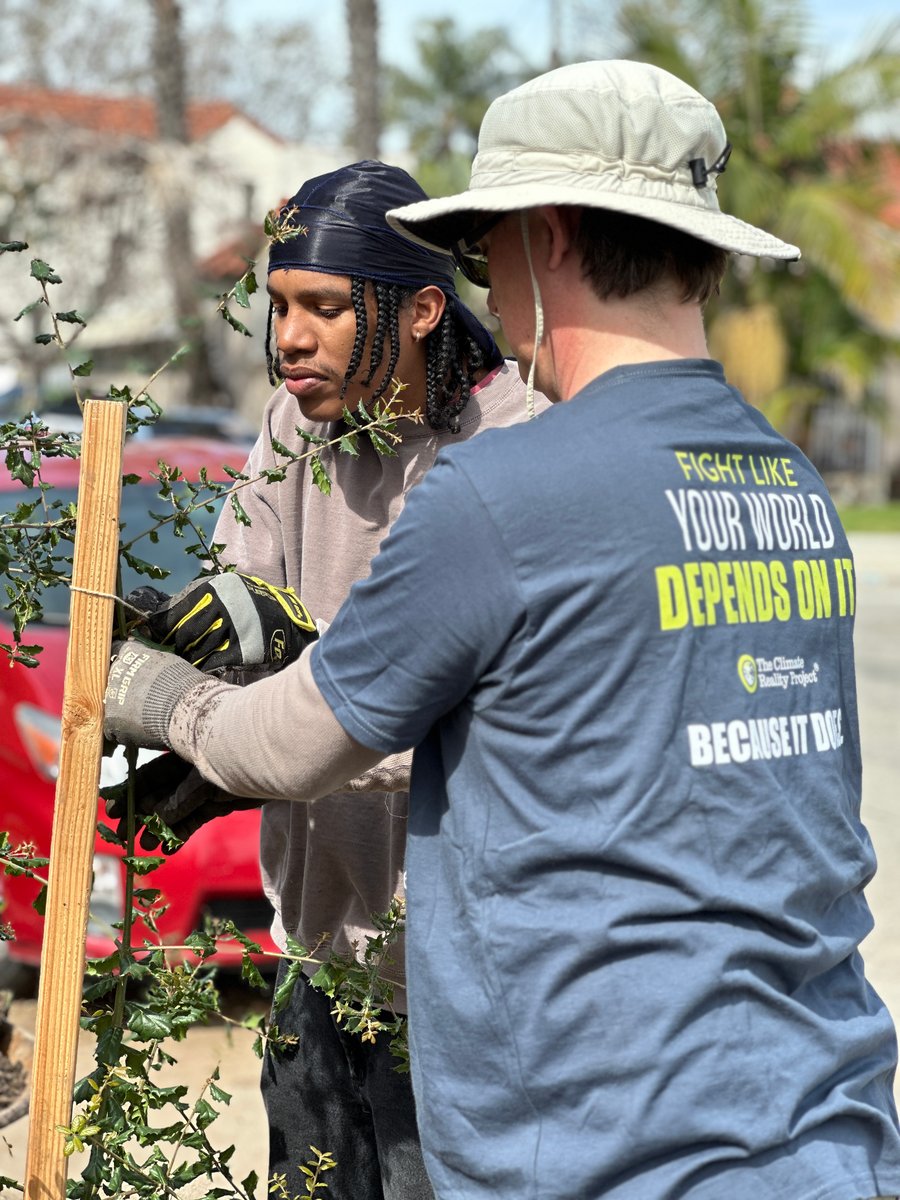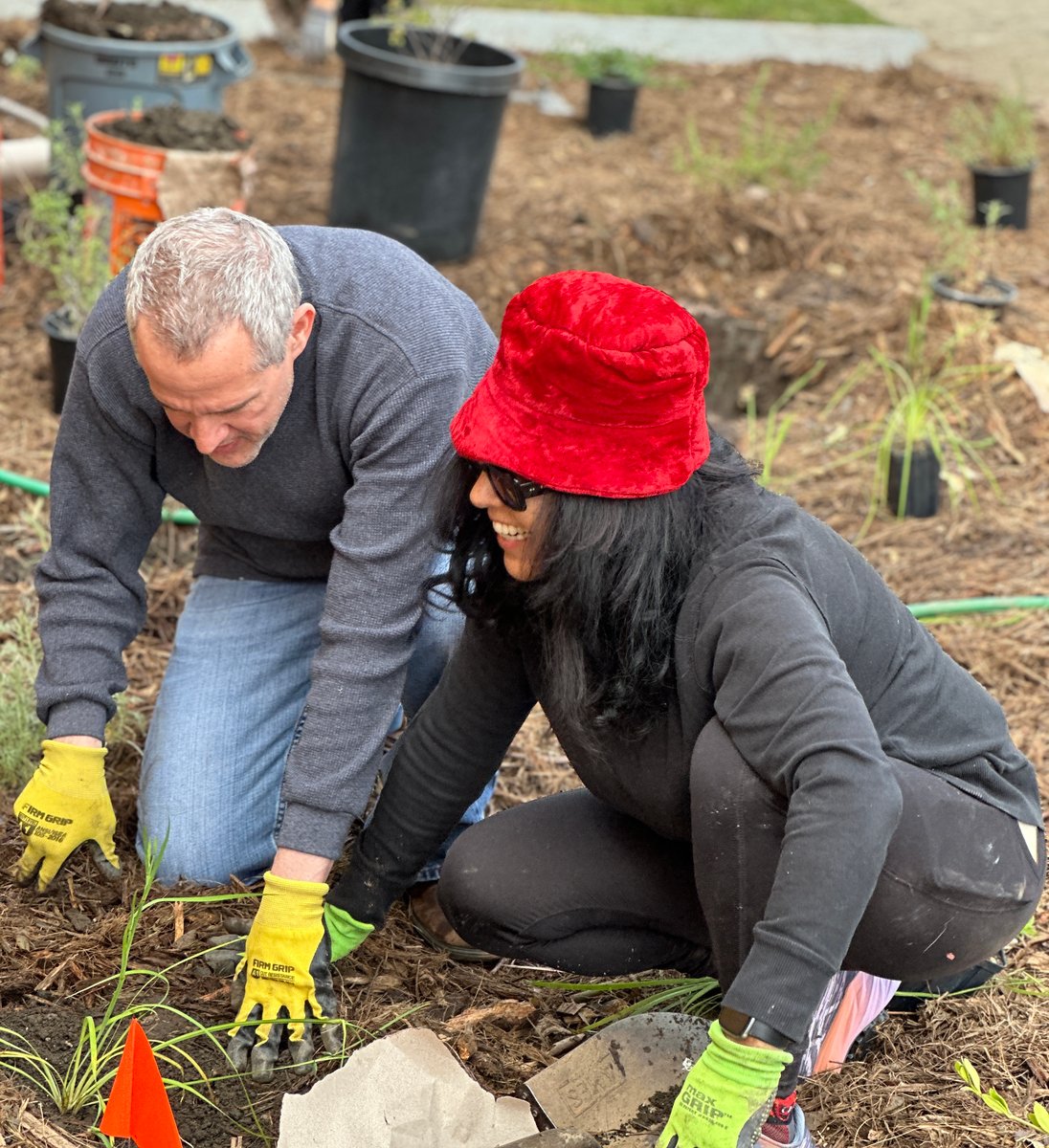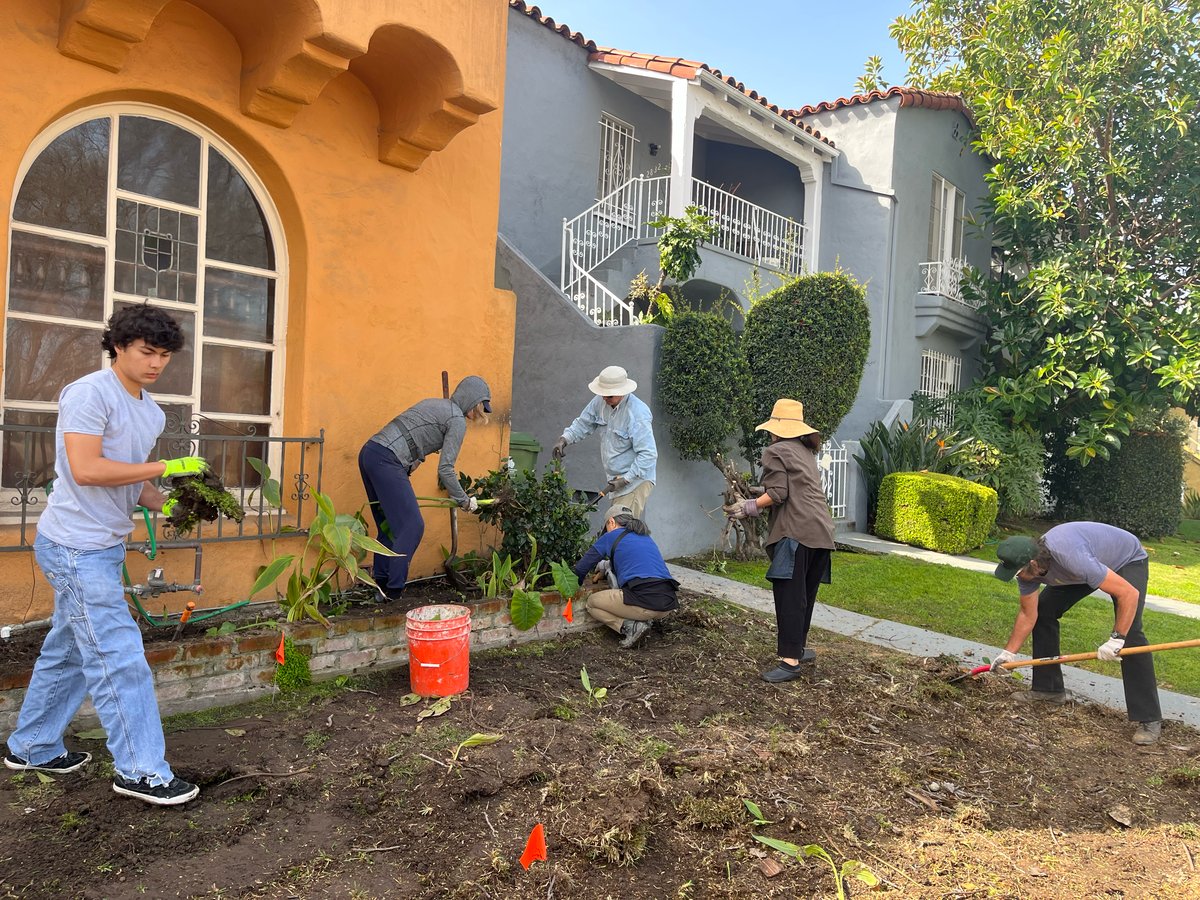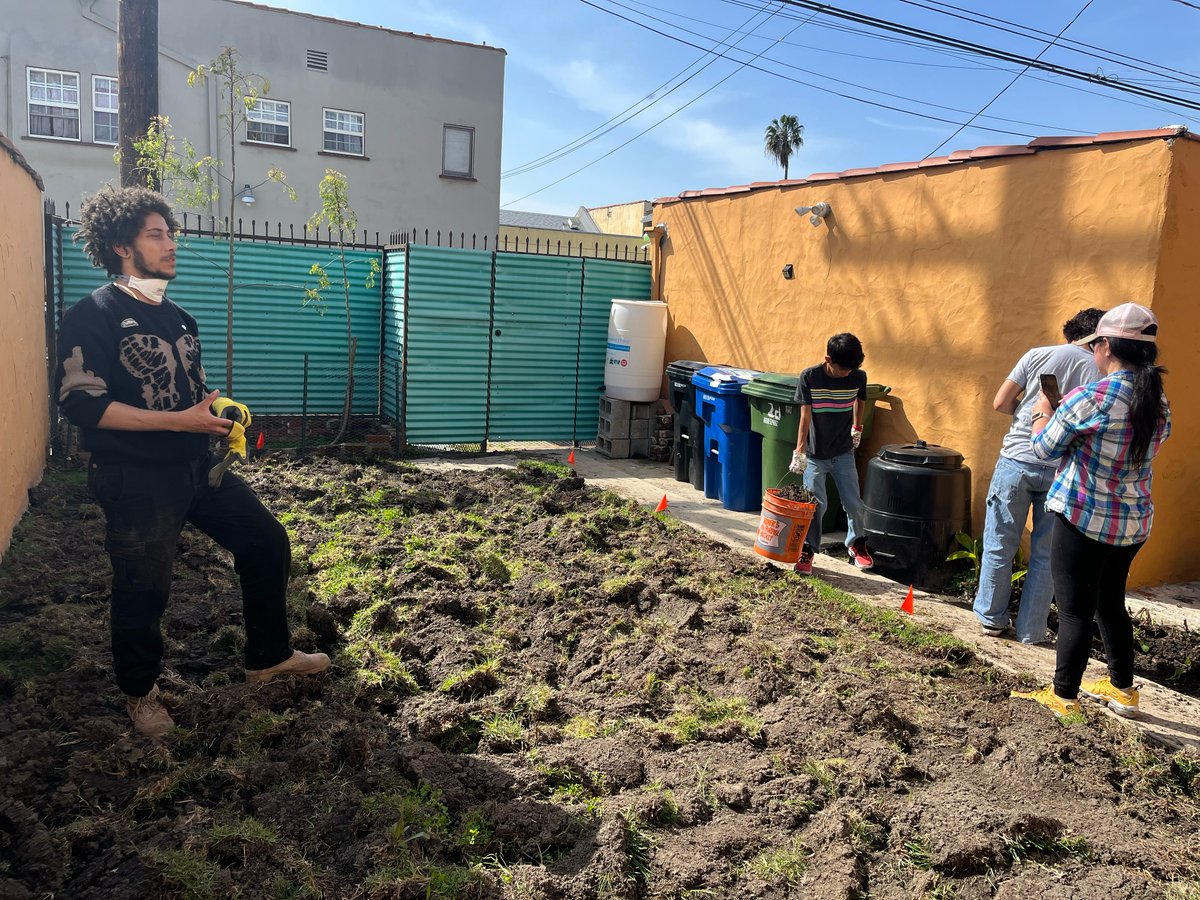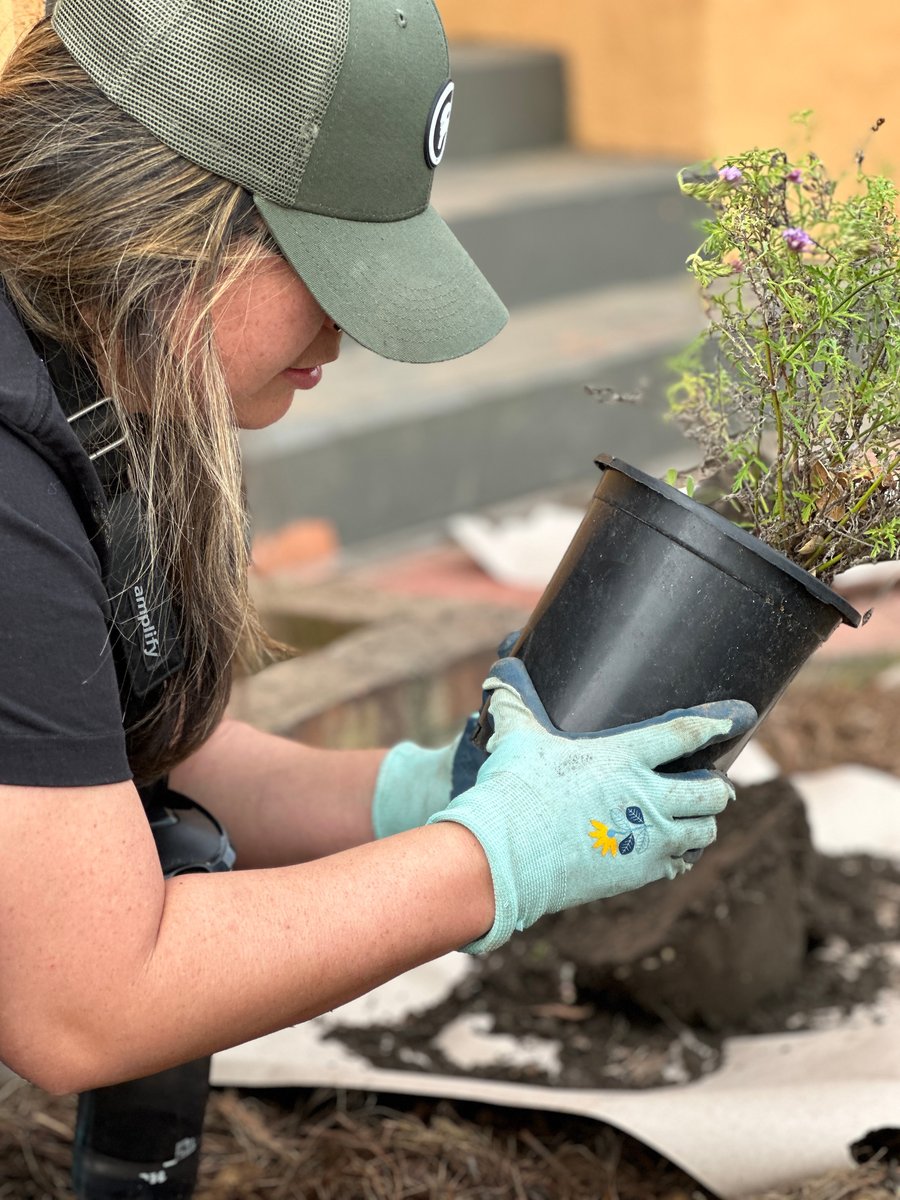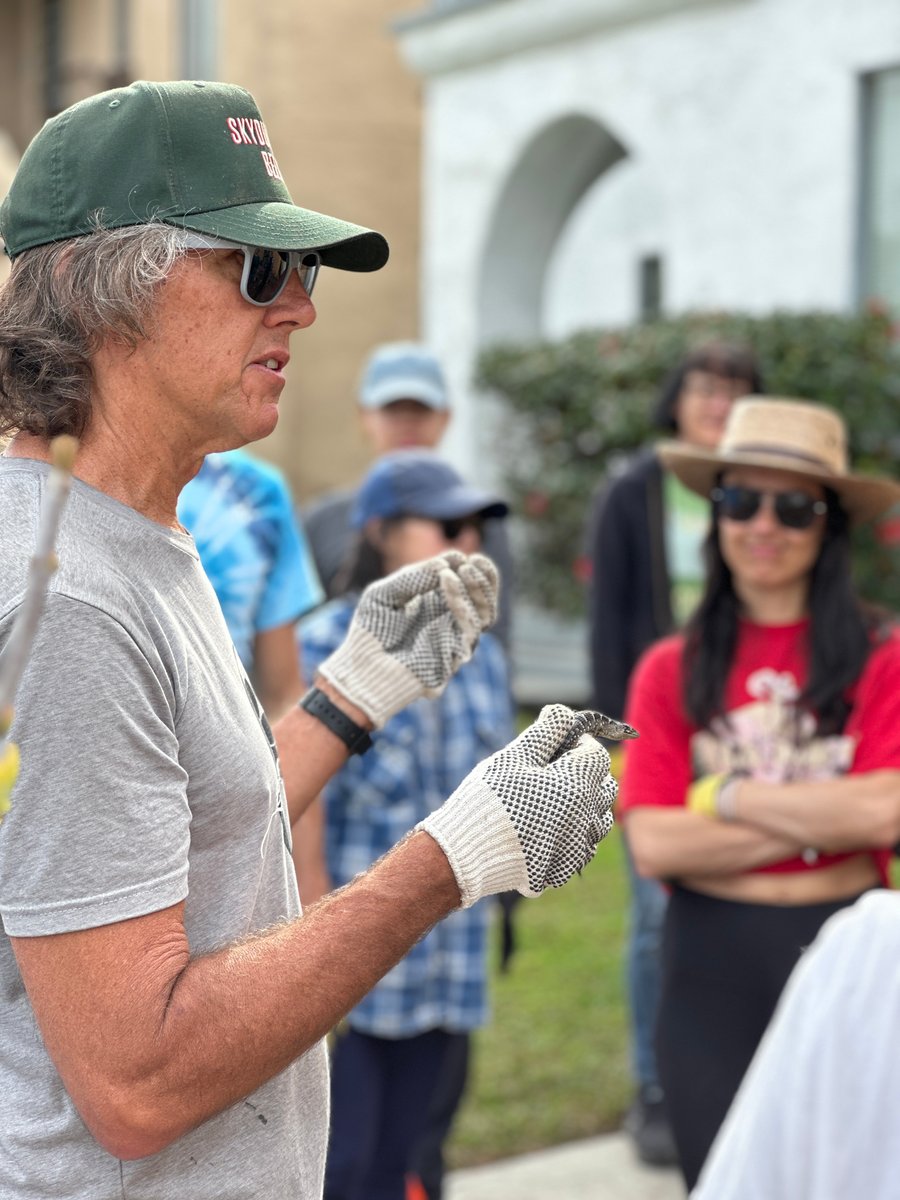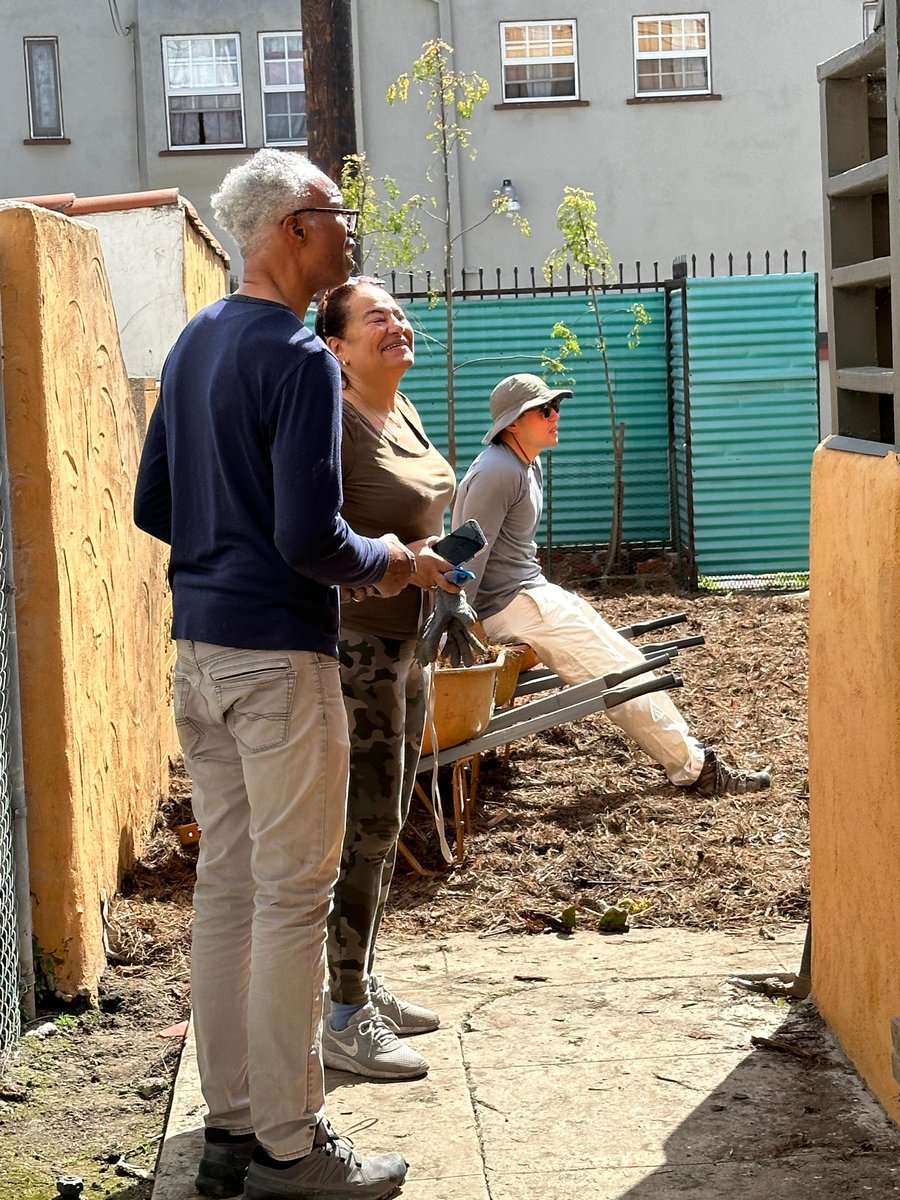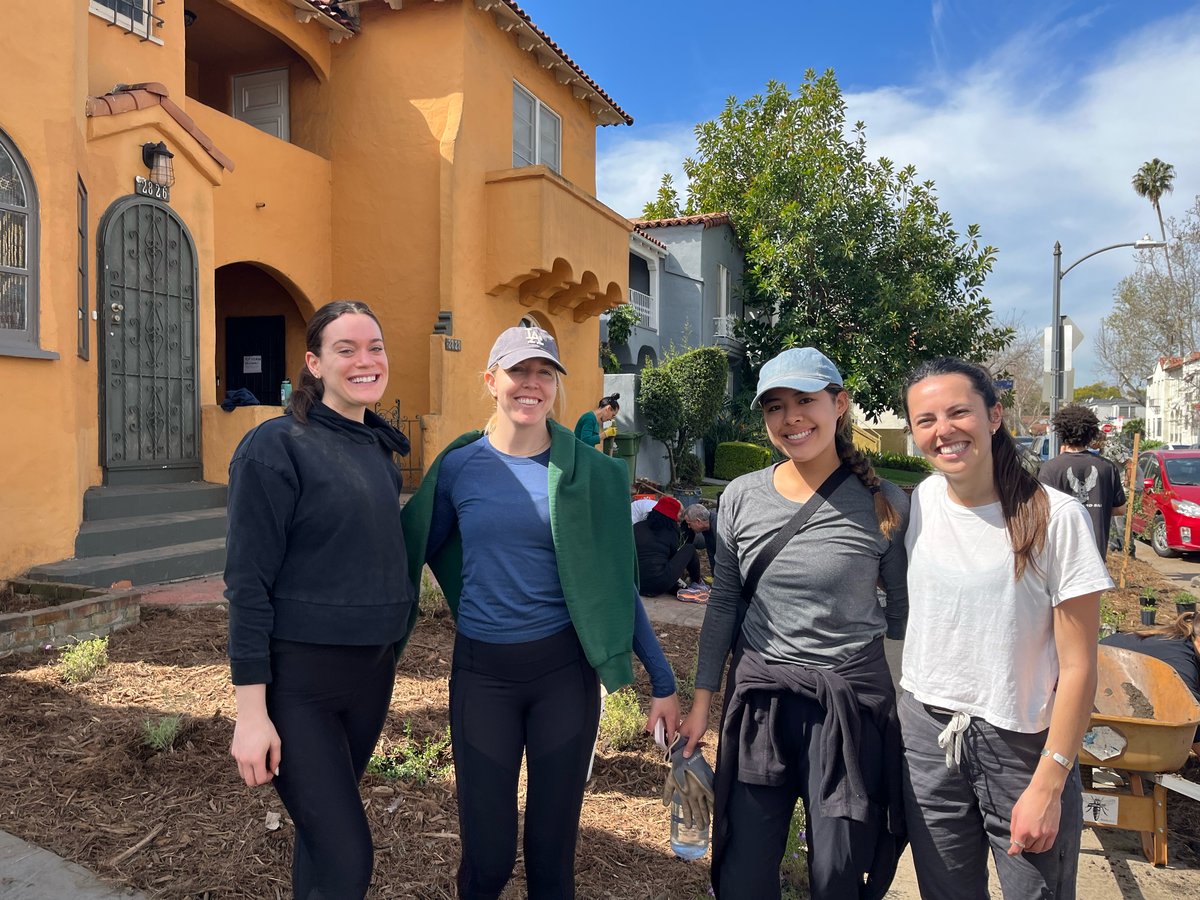
To have healthy oceans, waves, and beaches, we need healthy watersheds. Because much of our local environment has been paved over, flattened for development, and channelized to funnel water out as fast as possible, Los Angeles creates a staggering 48 billion gallons of urban stormwater runoff per year. This runoff flushes pollution to the ocean, floods our streets and communities, and if safely retained could be used to provide 30% of our annual water demand. Surfrider's Ocean Friendly Gardens program advocates for nature-based solutions throughout the watershed to support clean water, climate resilience, and biodiversity. Every front and backyard is an opportunity to restore habitat and regain the resilience of a healthy, functioning ecosystem, and with support from Accelerate Resilience L.A., a sponsored project of Rockefeller Philanthropy Advisors, we were stoked to have the opportunity to take some hands-on restoration action in Leimert Park!
This transformation took place at a multi-unit building in the neighborhood of Leimert Park in South Los Angeles, and was made possible through a coalition of local organizations aligned for the same goal; to transform the status quo of a grass lawn into a functional, biodiverse habitat that will conserve resources and support a climate-resilient future. The coalition was led by the Los Angeles Neighborhood Council Sustainability Alliance (LANCSA), the Climate Reality Project LA Chapter, Surfrider Foundation LA Chapter, and supported by TreePeople, Bewaterwise.com, Urban Renewable, Empowerment Congress West Area (ECWA), Chaminade College Preparatory School, Selva EcoGardens, and the Los Angeles Department of Water and Power.
We had an incredible turnout of 111 volunteers during the two-day event who put their energy, passion, and muscle to work! Together we removed 1215 sq ft of grass lawn and planted 186 native plants, including 3 species of native trees. Volunteers learned how to sheet mulch to prevent weeds and build healthy soil, how to prepare a former lawn for planting, and how to create a bioswale and rain garden basin. For many volunteers, it was their first time doing these unique gardening activities and it was awesome to see them overcome hesitations and become confident in their ability to take action.
Volunteer Kwame and Charles Miller of Climate Reality LA Chapter set up a support for the coast live oak tree, volunteers Aurora and Jeff plant blue eyed grass in the new rain garden (Photos courtesy of Urban Renewable)
Like most of the houses in the neighborhood, our project site was a flat, green grass lawn that had been in place for decades. In Southern California, most of us are aware of the urgent need to conserve water, and that lawns are big water-wasters. But the problems with lawns go beyond their water consumption. Grass lawns cover over 40 million acres in the U.S., 3 times the area of any irrigated crop like corn, wheat, or soy. Lawns offer very little habitat or shelter for wildlife, especially lacking resources for local pollinators and migratory birds with specific needs. Fossil-fuel powered lawn care tools used to 'mow and blow' contribute to air pollution, water pollution from spilled fuel, and carbon emissions. Fertilizers, weed killers, and pesticides all contribute to polluting our waterways, and compacted, short-rooted non-native grass on flat terrain increases the amount of runoff sent to storm drains.
The process began with removing the existing grass, first with a sod cutter to remove the bulk of the material and then with shovels to dig out roots around the edges. Volunteers gathered up the cut sod, removed as much soil as possible, and moved all of the plant material to a dumpster out front. This was the longest part of the process, but everyone's teamwork and energy kept us going!
Volunteers remove tropical plants and sod in the front and back yards
Next we moved onto sheet mulching with rolls of brown paper and shredded mulch. Sheet mulching can also be done with repurposed newspaper, brown paper bags, or cardboard boxes, but we opted for rolls of uncoated brown paper because it is the easiest way to cover a large area quickly. The layer of paper is sprayed down with a hose to keep it in place on the soil, and covered with 3 - 6 inches of shredded mulch. This process shades out grass roots and weeds from immediately growing back while the plants get established, and when the paper breaks down the carbon will help balance the nutrient ratios in the soil.
 Volunteers learn about sheet mulching and get hands-on practice with this sustainable weed-prevention method (Photo courtesy of Urban Renewable)
Volunteers learn about sheet mulching and get hands-on practice with this sustainable weed-prevention method (Photo courtesy of Urban Renewable)
In the backyard we created a bioswale, or a little creek, to direct the outflow of the downspout away from the building and let it soak into the ground. Volunteers dug out a natural creek shape, and we tested it with a hose to make sure it flowed smoothly in the right direction. In the front yard we created a large basin to collect the water flowing from the porch and off the front of the roof, using the soil we removed to build a berm along the front side of the slope. These are both stormwater capture features that will prevent runoff from flowing into the street and instead direct it to hydrate the plants in the yard.
 Volunteers shape the bioswale in the backyard and test the flow with a hose
Volunteers shape the bioswale in the backyard and test the flow with a hose
On the 2nd day we were ready to plant! We had a wide variety of native plants, including verbena (Verbena lilacina), California fuschia (Epilobium canum), island snap dragon (Gambelia speciosa), coast sunflower (Encelia californica), and hummingbird sage (Salvia spathecea). In the bioswale and rain garden basin we planted blue eyed grass (Sisyrinchium bellum), yarrow (Achillea millefolium), and western redbud (Cercis occidentalis), which are tolerant of both seasonal flooding and drought. The parkway got two new trees, a coast live oak (Quercus agrifolia) and a velvet ash (Fraxinus velutina), that will not only support biodiversity and infiltrate rainwater but will also help shade and cool the area when they are mature.
Surfrider LA Chapter volunteer coordinator Mel plants a native verbena plant, Surfrider LA OFG lead Steve Williams holds an alligator lizard while discussing planting techniques (Photos courtesy of Urban Renewable)
Native plants support local biodiversity and provide food and habitat for pollinators like hummingbirds, moths, butterflies, and wild bees. Many migrating pollinators and birds rely on locally native plants to provide unique resources at predictable times of the year, and this is becoming even more crucial with the stresses of climate change. Even one plant in your yard can help create networks of nature in our urban environment and make a difference in the health of your local ecosystem.
 Photo courtesy of Urban Renewable
Photo courtesy of Urban Renewable
We finished by thoroughly watering the new plantings to help them adjust after the transplanting process. These plants will be hand-watered by the homeowners a few times a month for the first couple years, and after they are established they will be able to survive off of just rainfall.
A huge thank you to all of our volunteers and everyone who made this amazing project possible, we are looking forward to more hands-on OFG action very soon!

Interested in transforming your own yard? Through residential rebates offered by LADWP's Turf Replacement Program, you can receive up to $5 per sq ft for turf removal and up to $100 per tree planted through Bewaterwise.com. TreePeople's Native Garden Kits are designed to replace a 10' x10' area of your lawn with native plants, a great way to get started making a positive impact without overhauling your whole yard.
Want to come garden with us? Check out our events calendar for the next Ocean Friendly Gardens workday!
